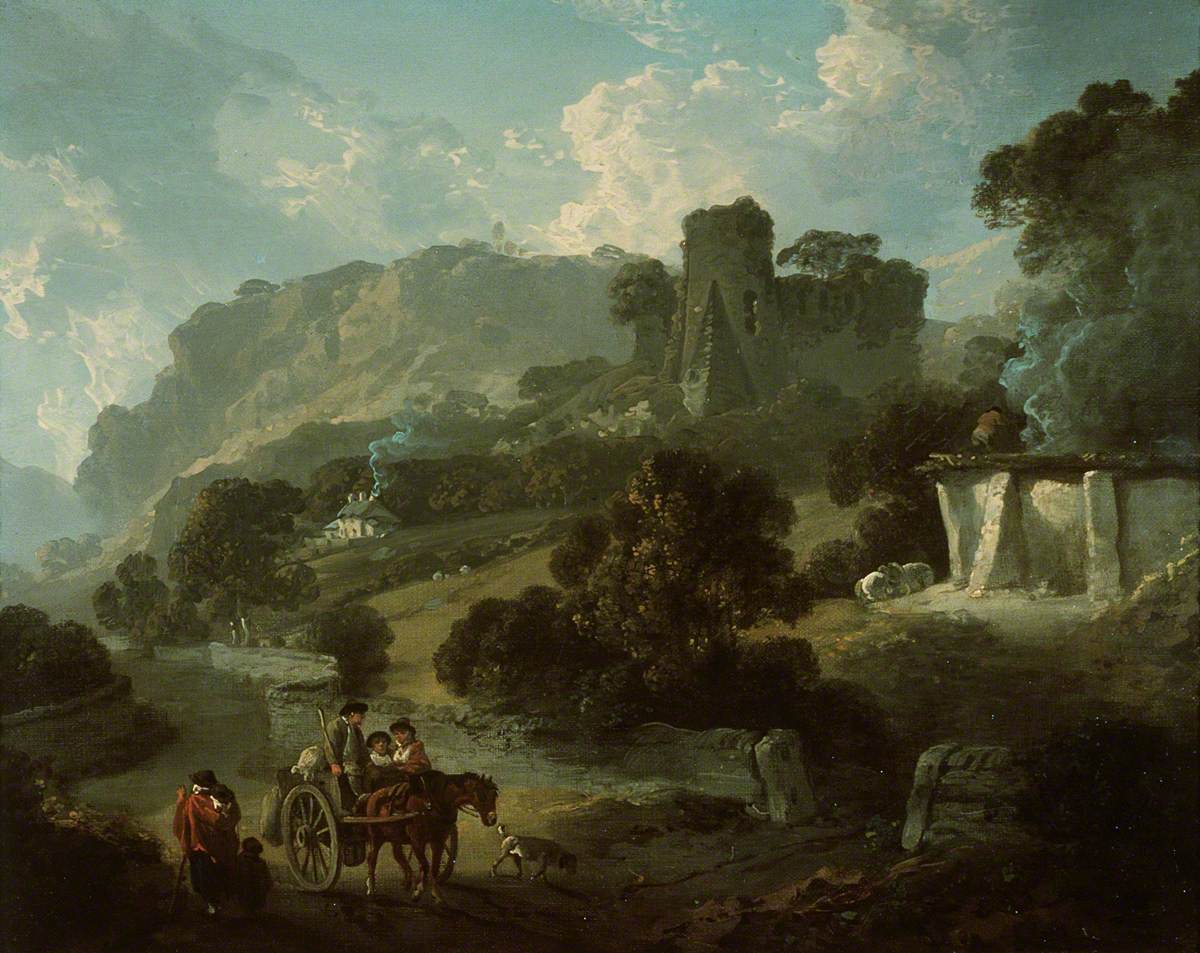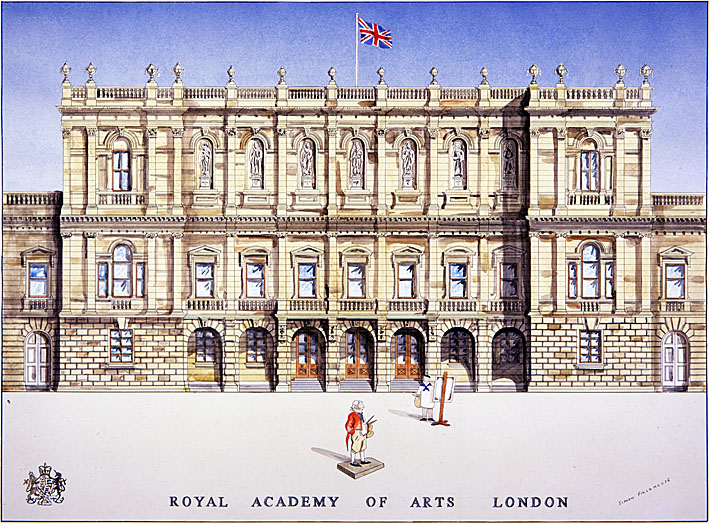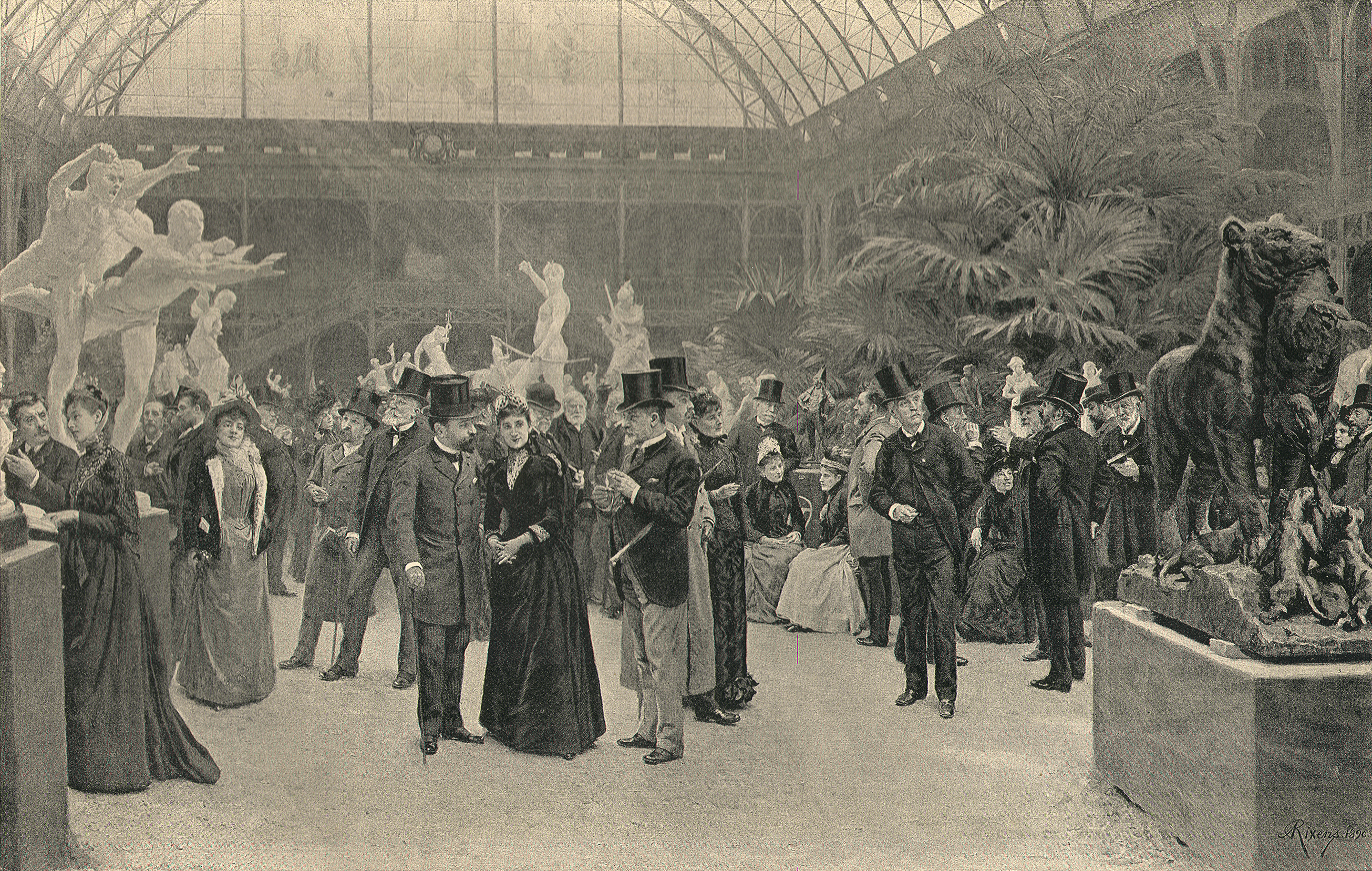|
Goscombe John
Sir William Goscombe John (21 February 1860 – 15 December 1952) was a prolific Welsh sculptor known for his many public memorials. As a sculptor, John developed a distinctive style of his own while respecting classical traditions and forms of sculpture. He gained national attention with statues of eminent Victorians in London and Cardiff and subsequently, after both the Second Boer War and World War I, created a large number of war memorials. These included the two large group works, '' The Response 1914'' in Newcastle upon Tyne and the Port Sunlight War Memorial which are considered the finest sculptural ensembles on any British monument. Although as a young man he adopted the first name Goscombe, taken from the name of a village in Gloucestershire near his mother's home, he was actively engaged with his native Wales and Welsh culture throughout his career. Biography Early life and career John was born in the Canton area of Cardiff, the eldest son of Thomas John, a wood ... [...More Info...] [...Related Items...] OR: [Wikipedia] [Google] [Baidu] |
Cardiff
Cardiff (; ) is the capital city, capital and List of urban areas in the United Kingdom, largest city of Wales. Cardiff had a population of in and forms a Principal areas of Wales, principal area officially known as the City and County of Cardiff (). The city is the List of cities in the United Kingdom, eleventh largest in the United Kingdom. Located in the South East Wales, southeast of Wales and in the Cardiff Capital Region, Cardiff is the county town of the Historic counties of Wales, historic county of Glamorgan and in 1974–1996 of South Glamorgan. It belongs to the Eurocities network of the largest European cities. A small town until the early 19th century, its prominence as a port for coal when mining began in the region helped its expansion. In 1905, it was ranked as a city and in 1955 proclaimed capital of Wales. The Cardiff urban area covers a larger area outside the county boundary, including the towns of Dinas Powys and Penarth. Cardiff is the main commercial ce ... [...More Info...] [...Related Items...] OR: [Wikipedia] [Google] [Baidu] |
Castell Coch
; ) is a 19th-century Gothic Revival castle built above the village of Tongwynlais in Wales. The first castle on the site was built by the Normans after 1081 to protect the newly conquered town of Cardiff and control the route along the River Taff. Abandoned shortly afterwards, the castle's earth motte was reused by Gilbert de Clare as the basis for a new stone fortification, which he built between 1267 and 1277 to control his freshly annexed Welsh lands. This castle may have been destroyed in the native Welsh rebellion of 1314. In 1760, the castle ruins were acquired by John Stuart, 3rd Earl of Bute, as part of a marriage settlement that brought the family vast estates in South Wales. John Crichton-Stuart, 3rd Marquess of Bute, inherited the castle in 1848. One of Britain's wealthiest men, with interests in architecture and antiquarian studies, he employed the architect William Burges to rebuild the castle, "as a country residence for occasional occupation in the summer", ... [...More Info...] [...Related Items...] OR: [Wikipedia] [Google] [Baidu] |
Port Sunlight War Memorial 9
A port is a maritime facility comprising one or more wharves or loading areas, where ships load and discharge cargo and passengers. Although usually situated on a sea coast or estuary, ports can also be found far inland, such as Hamburg, Manchester and Duluth; these access the sea via rivers or canals. Because of their roles as ports of entry for immigrants as well as soldiers in wartime, many port cities have experienced dramatic multi-ethnic and multicultural changes throughout their histories. Ports are extremely important to the global economy; 70% of global merchandise trade by value passes through a port. For this reason, ports are also often densely populated settlements that provide the labor for processing and handling goods and related services for the ports. Today by far the greatest growth in port development is in Asia, the continent with some of the world's largest and busiest ports, such as Singapore and the Chinese ports of Shanghai and Ningbo-Zhoushan. As of 2 ... [...More Info...] [...Related Items...] OR: [Wikipedia] [Google] [Baidu] |
Drummer Statue, King's Regiment Monument 2
A drummer is a percussionist who creates music using drums. Most contemporary western bands that play rock, pop, jazz, or R&B music include a drummer for purposes including timekeeping and embellishing the musical timbre. The drummer's equipment includes a drum kit (or "drum set" or "trap set"), which includes various drums, cymbals and an assortment of accessory hardware such as pedals, standing support mechanisms, and drum sticks. Particularly in the traditional music of many countries, drummers use individual drums of various sizes and designs rather than drum kits. Some use only their hands to strike the drums. In larger ensembles, the drummer may be part of a rhythm section with other percussionists playing. These musicians provide the timing and rhythmic foundation which allow the players of melodic instruments, including voices, to coordinate their musical performance. Some famous drummers include: Max Roach, Ringo Starr (the Beatles), John Bonham (Led Zeppelin), ... [...More Info...] [...Related Items...] OR: [Wikipedia] [Google] [Baidu] |
William Cavendish, 7th Duke Of Devonshire
William Cavendish, 7th Duke of Devonshire (27 April 1808 – 21 December 1891), styled Lord Cavendish of Keighley between 1831 and 1834 and Earl of Burlington between 1834 and 1858, was an English Aristocracy, aristocrat, Land tenure, landowner, Real estate development, property developer, industrialist, Benefactor (law), benefactor, and prominent politician. Early life Cavendish was the son of William Cavendish (1783-1812), William Cavendish (1783–1812) and the Honourable Louisa O'Callaghan (d. 1863). His father was the eldest son of George Cavendish, 1st Earl of Burlington, Lord George Cavendish (later created, in 1831, the 1st Earl of Burlington, by the second creation), third son of William Cavendish, 4th Duke of Devonshire, the 4th Duke of Devonshire and Charlotte Cavendish, Marchioness of Hartington, Lady Charlotte Boyle, daughter of Richard Boyle, 3rd Earl of Burlington, the 3rd Earl of Burlington and 4th Earl of Cork. His mother was the daughter of Cornelius O'Callagha ... [...More Info...] [...Related Items...] OR: [Wikipedia] [Google] [Baidu] |
Royal Academy
The Royal Academy of Arts (RA) is an art institution based in Burlington House in Piccadilly London, England. Founded in 1768, it has a unique position as an independent, privately funded institution led by eminent artists and architects. Its purpose is to promote the creation, enjoyment and appreciation of the fine arts through exhibitions, education and debate. History The origin of the Royal Academy of Arts lies in an attempt in 1755 by members of the Royal Society of Arts, Society for the Encouragement of Arts, Manufactures and Commerce, principally the sculptor Henry Cheere, to found an autonomous academy of arts. Before this, several artists were members of the Society for the Encouragement of Arts, Manufactures and Commerce, including Cheere and William Hogarth, or were involved in small-scale private art academies, such as the St Martin's Lane Academy. Although Cheere's attempt failed, the eventual charter, called an 'Instrument', used to establish the Royal Academy of ... [...More Info...] [...Related Items...] OR: [Wikipedia] [Google] [Baidu] |
Tate
Tate is an institution that houses, in a network of four art galleries, the United Kingdom's national collection of British art, and international modern and contemporary art. It is not a government institution, but its main sponsor is the UK Department for Culture, Media and Sport. The name "Tate" is used also as the operating name for the corporate body, which was established by the Museums and Galleries Act 1992 as "The Board of Trustees of the Tate Gallery". The gallery was founded in 1897 as the National Gallery of British Art. When its role was changed to include the national collection of modern art as well as the national collection of British art, in 1932, it was renamed the Tate Gallery after sugar magnate Henry Tate of Tate & Lyle, who had laid the foundations for the collection. The Tate Gallery was housed in the current building occupied by Tate Britain, which is situated in Millbank, London. In 2000, the Tate Gallery transformed itself into the current-day Tate ... [...More Info...] [...Related Items...] OR: [Wikipedia] [Google] [Baidu] |
Exposition Universelle (1900)
The Exposition Universelle of 1900 (), better known in English as the 1900 Paris Exposition, was a world's fair held in Paris, France, from 14 April to 12 November 1900, to celebrate the achievements of the past century and to accelerate development into the next. It was the sixth of ten major expositions held in the city between 1855 and 1937. It was held at the esplanade of Les Invalides, the Champ de Mars, the Trocadéro and at the banks of the Seine between them, with an additional section in the Bois de Vincennes, and it was visited by more than fifty million people. Many international congresses and other events were held within the framework of the exposition, including the 1900 Summer Olympics. Many technological innovations were displayed at the Fair, including the '' Grande Roue de Paris'' ferris wheel, the '' Rue de l'Avenir'' moving sidewalk, the first ever regular passenger trolleybus line, escalators, diesel engines, electric cars, dry cell batteries, electr ... [...More Info...] [...Related Items...] OR: [Wikipedia] [Google] [Baidu] |
John Crichton-Stuart, 3rd Marquess Of Bute
John Patrick Crichton-Stuart, 3rd Marquess of Bute, (12 September 1847 – 9 October 1900) was a Scottish landed aristocrat, industrial magnate, antiquarian, scholar, philanthropist, and architectural patron. When Bute succeeded to the marquisate at the age of just six months, his vast inheritance reportedly made him the richest man in the world. He owned mostly in Glamorgan, Ayrshire and Bute. His conversion to Catholicism from the Church of Scotland at the age of 21 scandalised Victorian society and led Prime Minister Benjamin Disraeli to use the Marquess as the basis for the eponymous hero of his novel '' Lothair'', published in 1870. Marrying into one of Britain's most illustrious Catholic families, that of the Duke of Norfolk, Bute became one of the leaders of the British Catholic community. His expenditure on building and restoration made him the foremost architectural patron of the 19th century. Lord Bute died in 1900, at the age of 53; his heart was buried on th ... [...More Info...] [...Related Items...] OR: [Wikipedia] [Google] [Baidu] |
Paris Salon
The Salon (), or rarely Paris Salon (French: ''Salon de Paris'' ), beginning in 1667 was the official art exhibition of the in Paris. Between 1748 and 1890 it was arguably the greatest annual or biennial art event in the Western world. At the Salon of 1761, thirty-three painters, nine sculptors, and eleven engravers contributed. Levey, Michael. (1993) ''Painting and sculpture in France 1700–1789''. New Haven: Yale University Press, p. 3. From 1881 onward, it was managed by the Société des Artistes Français. Origins In 1667, the royally sanctioned French institution of art patronage, the (a division of the Académie des beaux-arts), held its first semi-public art exhibit at the Salon Carré. The Salon's original focus was the display of the work of recent graduates of the École des Beaux-Arts, which was created by Cardinal Mazarin, chief minister of France, in 1648. Exhibition at the Salon de Paris was essential for any artist to achieve success in France for at le ... [...More Info...] [...Related Items...] OR: [Wikipedia] [Google] [Baidu] |
Auguste Rodin
François Auguste René Rodin (; ; 12 November 184017 November 1917) was a French sculptor generally considered the founder of modern sculpture. He was schooled traditionally and took a craftsman-like approach to his work. Rodin possessed a unique ability to model a complex, turbulent, and deeply pocketed surface in clay. He is known for such sculptures as ''The Thinker'', ''Monument to Balzac'', ''The Kiss (Rodin sculpture), The Kiss'', ''The Burghers of Calais'', and ''The Gates of Hell''. Many of Rodin's most notable sculptures were criticized, as they clashed with predominant figurative sculpture traditions in which works were decorative, formulaic, or highly Theme (arts), thematic. Rodin's most original work departed from traditional themes of mythology and allegory. He modeled the human body with naturalism, and his sculptures celebrate individual character and physicality. Although Rodin was sensitive to the controversy surrounding his work, he refused to change his sty ... [...More Info...] [...Related Items...] OR: [Wikipedia] [Google] [Baidu] |
William Silver Frith
William Silver Frith (1850–1924) was a British sculptor. Frith graduated from the Lambeth School of Art and the Royal Academy Schools, and became assistant to Jules Dalou. By 1880 Frith had succeeded Dalou as master at the newly formed South London Technical Art School (which replaced Lambeth School of Art and is now called City and Guilds of London Art School). There he became a guiding force to several of the figures in the New Sculpture school, including F. W. Pomeroy, C. J. Allen (sculptor), C. J. Allen, and George Frampton. In his own work he was primarily an architectural sculptor, often with architect Sir Aston Webb. His work includes: * figures of ''Justice'', ''Truth'', ''Patience'' and ''Plenty'', Victoria Law Courts, Birmingham (1885) * the Metropolitan Life Assurance Company building in Moorgate, London * fountain figures at Christ's Hospital, Horsham, Sussex, England * Imperial College, South Kensington * supervising sculptor and the ''Canada'' group for , Glas ... [...More Info...] [...Related Items...] OR: [Wikipedia] [Google] [Baidu] |







